This is my 18th weekly COVID-19 update. Subscribe to Dr. Dina
Hello friends!
Welcome to another pandemic update!
One day these newsletters will be filled with uplifting stories and butterflies and rainbows. Soon enough, I hope!
As always, I thank you very much for your support and encouragement. These updates are a fair bit of work, but I want to ensure that you have a clear lay of the land. I know the data can prove challenging to navigate. I am happy to be your guide 😊 .
Let us review the bad news, followed by the good news, and my most common question of the week. We will end on a happy note as I share my silver lining of the week.
What is the bad news?
There have been over 115 MILLION cases of COVID-19 worldwide, with over 2.5 million deaths reported.
While many areas in Ontario have begun to relax restrictions, other regions, such as Thunder-Bay and Simcoe-Muskoka, are heading back into lockdown due to increased community spread.
Case counts were heading down but now are spiking up again in some areas. These case positivity rates of > 5% are concerning.
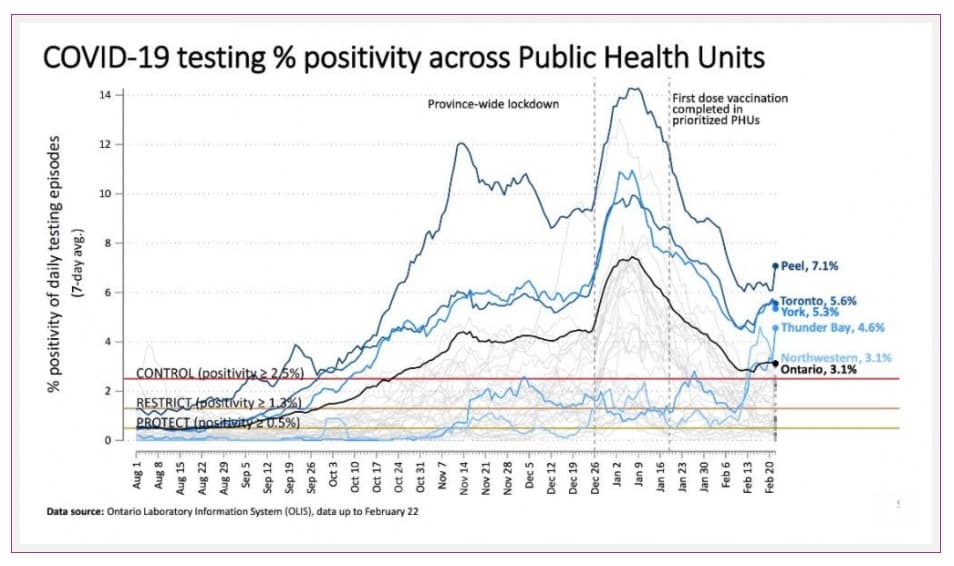
There are some estimates that by mid-March, 40%+ of new cases will be from variants of concern. Remember, some of these VOCs are more contagious. Some can make you sicker. And some aren’t prevented as easily by current vaccines.
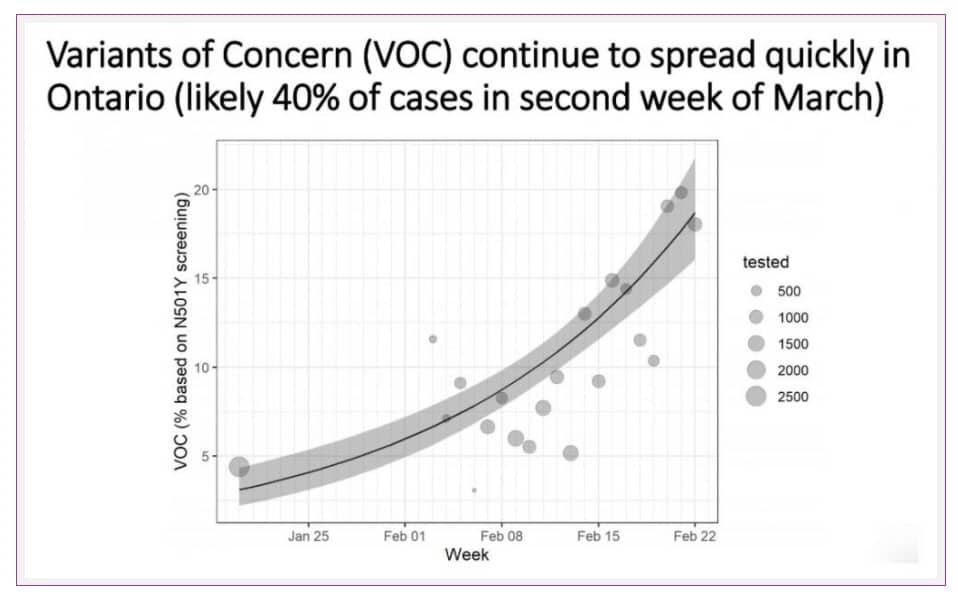
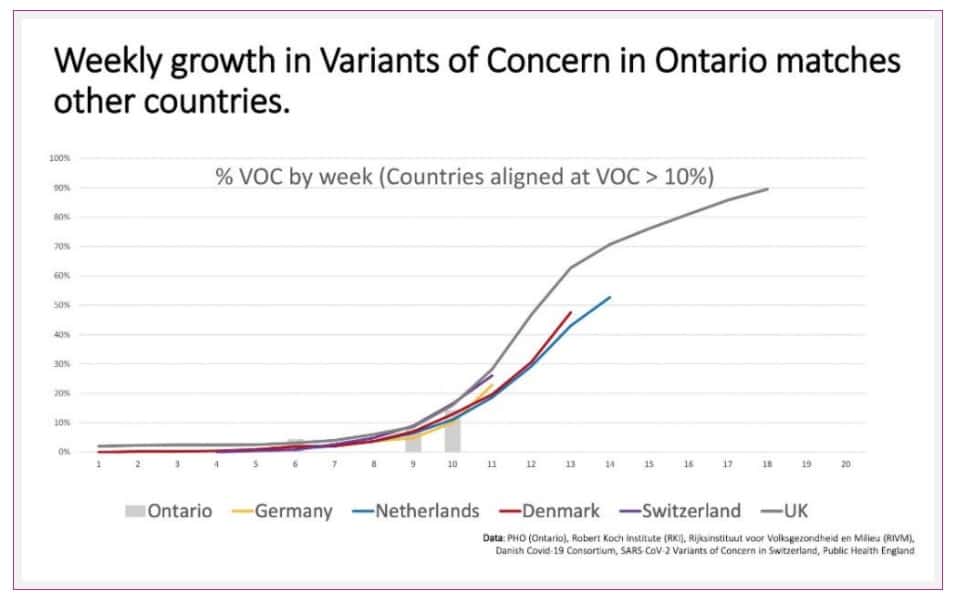
Dr. Dina, tell me some good news!
I am happy to report some good news, though not enough that we should drop our guard. We have seen a decline in COVID-19 cases, hospitalization, and ICU use. Public health transmission has led to a decrease in transmission. However, as discussed in the last few weeks the variants of concern are spreading across Canada, and we suspect that hospitalizations and deaths will begin to rise again as a result. Public health experts warn of an impending third wave, but there is much optimism that our Summer will be more enjoyable and perhaps even a bit more normal.
Increased vaccination and ongoing public health measures will hopefully slow the spread of illness. Case counts will decrease as we can spend more time outdoors in the warmer weather. We can all be excited about that!
HOWEVER, we do need a bit of patience. I know it has been a LONG year! I know many of us are sick and tired of talking about COVID, about wearing masks. About keeping our distance. I get it. I am sick of it too. But now is not the time to pretend the pandemic is over. It is not. We see the light at the end of the tunnel, but the tunnel is still somewhat long. If we remain on task, follow public health recommendations and stay the course, the light tunnel will grow brighter.
Question of the week
What are the different Health Canada-approved COVID-19 vaccines?
This week, I was often asked the difference between the types of Health Canada-approved COVID-19 vaccines. Currently, we have three options, the Oxford/Astra Zeneca (Ox-AZ) vaccine, the Moderna vaccine, and the Pfizer vaccine. A few other options are pending Health Canada approval.
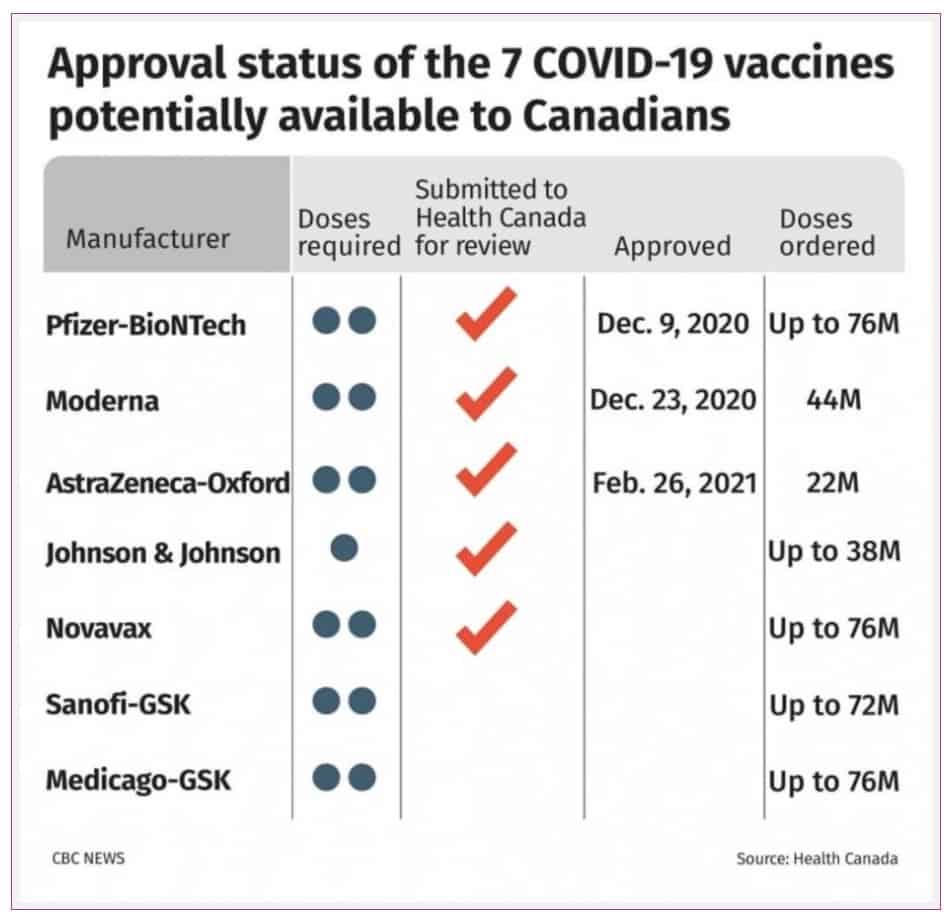

The AstraZeneca vaccine is not mRNA-based. It uses adenovirus-vectored technology. Essentially, it is a harmless, modified version of a cold (adeno) virus in chimpanzees. It cannot make you sick but carries a gene from the infamous COVID-19 spike protein. As a reminder, this spike protein is what triggers an immune response. The vaccine will tell the immune system to make antibodies that work against COVID-19. That way, if a vaccinated person is exposed to COVID-19, the body will begin to attack it.
You may wonder why the vaccine is made with a chimpanzee adenovirus. Great question. It is a simple answer: the modified virus needs to be new to humans—otherwise, the body won’t make those antibodies to prevent infection. Many of us already have antibodies from human adenoviruses. Most of us have not been exposed to chimpanzee adenovirus, though!
Initially, the AstraZeneca vaccine was given with two shots spaced about a month apart. This is the same as the Pfizer and Moderna vaccines. However, research shows that the vaccine is more effective if the second dose is given more than 12 weeks after the first dose.
We discussed previously how the Pfizer and Moderna vaccines work through mRNA technology. mRNA vaccines work by introducing a piece of genetic code, tricking the body into making COVID-19 antibodies. Both of these vaccines require two doses given about a month apart.
Which vaccine is easier to store and transport?
AstraZeneca’s vaccine is the easiest to transport by far, as it can be stored for up to 6 months at normal fridge temperatures. This is HUGE, as the Pfizer and Moderna vaccines require freezing temperatures. The AstraZeneca vaccine could be stable in a medical clinic, whereas the mRNA vaccines require special freezers. This makes this vaccine much more accessible in remote communities where the cold chain is much more challenging.
Which vaccine is the cheapest?
The AstraZeneca vaccine costs less than $5 a dose, while the mRNA vaccines are >$20 each. Prices will undoubtedly change over time, but the adenovirus vaccines will likely remain cheaper to make.
Which has the least side effects?
All three vaccines have similar side effects, such as pain at the injection site and flu-like symptoms. Many people experience fever, headaches, muscle pain, and fatigue, particularly after the second dose when the immune system is primed.
Which vaccine is more effective at preventing COVID-19?
The mRNA vaccines are more effective at preventing COVID-19 infection, at >95% efficacy after the second dose. They also prevent severe illness should you get infected.
The AstraZeneca vaccine appears to be 60-70% effective at preventing COVID-19. Though this vaccine is less effective than the Pfizer and Moderna vaccines at preventing infection, this vaccine is 100% effective at preventing severe outcomes of COVID-19, including serious illness, hospitalizations, and death. Therefore, it has great merit, especially in the setting of a low-risk individual.
It appears to be more effective with increasing time between the two doses; people who received the doses 12 weeks apart had higher immunity than those who had six weeks apart. This could allow more doses to be given to more people, bolstering the global immunization effort. We need more data to see the optimal dosing plan of these vaccines.
The vaccines are currently authorized for use in people 18 years and older. Sorry, kids are not getting these vaccines anytime soon. They haven’t been tested on kids yet, and kids don’t tend to get very sick from COVID-19, so they aren’t a priority for the vaccines, at least not yet.
As we have discussed at length in previous newsletters, vulnerable populations such as racialized minorities and those who perform essential work are at greater risk of severe COVID-19 infection, hospitalization, and death. The Ontario Scientific Advisory Table suggests using both age and postal code to determine who should receive the COVID-19 vaccines first. The goal is to reduce severe illness and death.
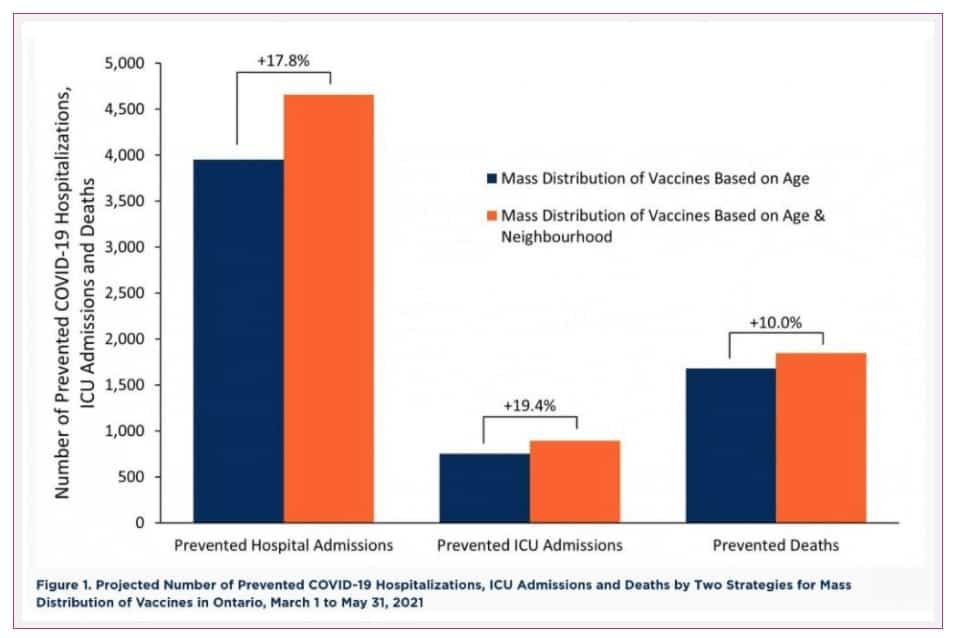
You can see this strategy will not only decrease hospital admissions, ICU admissions, and death but focusing on age and neighborhood to target those most disadvantaged is even more effective than focusing on age alone.
My silver lining for the week
I am not a superstitious person, but I feel a bit superstitious writing this. I have not had even a runny nose since February 2020. Not one. No one in my family has been sick in any way whatsoever in over a year. A family of 6! And I am still in direct contact with families all day, every day. Masking and diligent hand hygiene (and careful screening for illnesses) have led to a remarkably healthy year for us. Not to mention how incredibly grateful I am for my health and the health of my family. I have become much more aware and thankful for those blessings.
Many people take their health for granted until they are sick. I am much more mindful of health and wellness’s fragility, and I am thankful for this increased awareness.
COVID sucks, but we all have much to be grateful for. We have many blessings in our lives, and these deserve as much, if not more attention, than the challenges we face.
A gentle (but not to be ignored) reminder from your neighborhood pediatrician and mom:
As we continue to see a spread of variants of concern, it is more important than ever to follow public health guidelines, to protect yourself, your family, and the community.
• Limit your contact to household members only, and stay at home (or outdoors, distanced from others) as much as possible.
• Social gatherings and playdates outside of the school and daycare have led to the spread of COVID-19.
• Keep at least two meters (six feet) apart from others outside of your household.
• Wear a mask.
• Wash your hands frequently, with soap and water for 20+ seconds. Or use hand sanitizer when soap and water are not available.
• Stay home if you are feeling unwell or if you have been told to self-isolate.
Thanks for joining me again!
I wish you an incredible start to March (holy moly, we are in March already?!), and a happy and safe week!
#YOUGOTTHIS


![[Dr. Dina News] IMPORTANT UPDATE re. VIRTUAL CARE](https://drdina.ca/wp-content/uploads/2021/01/dr-dina-kulik-kids-and-virtual-care-1a-400x250.jpg)
![[Dr. Dina News] COVID-19 Vaccine for Infants and Young Children.](https://drdina.ca/wp-content/uploads/2021/04/dr-dina-kulik-kids-and-vaccines-400x250.jpg)
![[Dr. Dina News] COVID-19 Vaccine for Infants and Young Children.](https://drdina.ca/wp-content/uploads/2022/04/DRD-1-400x250.jpg)






